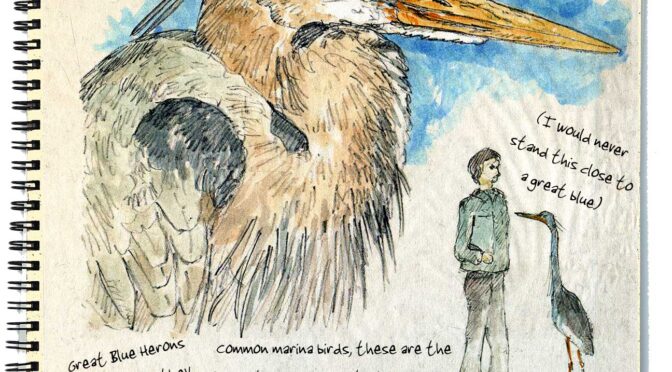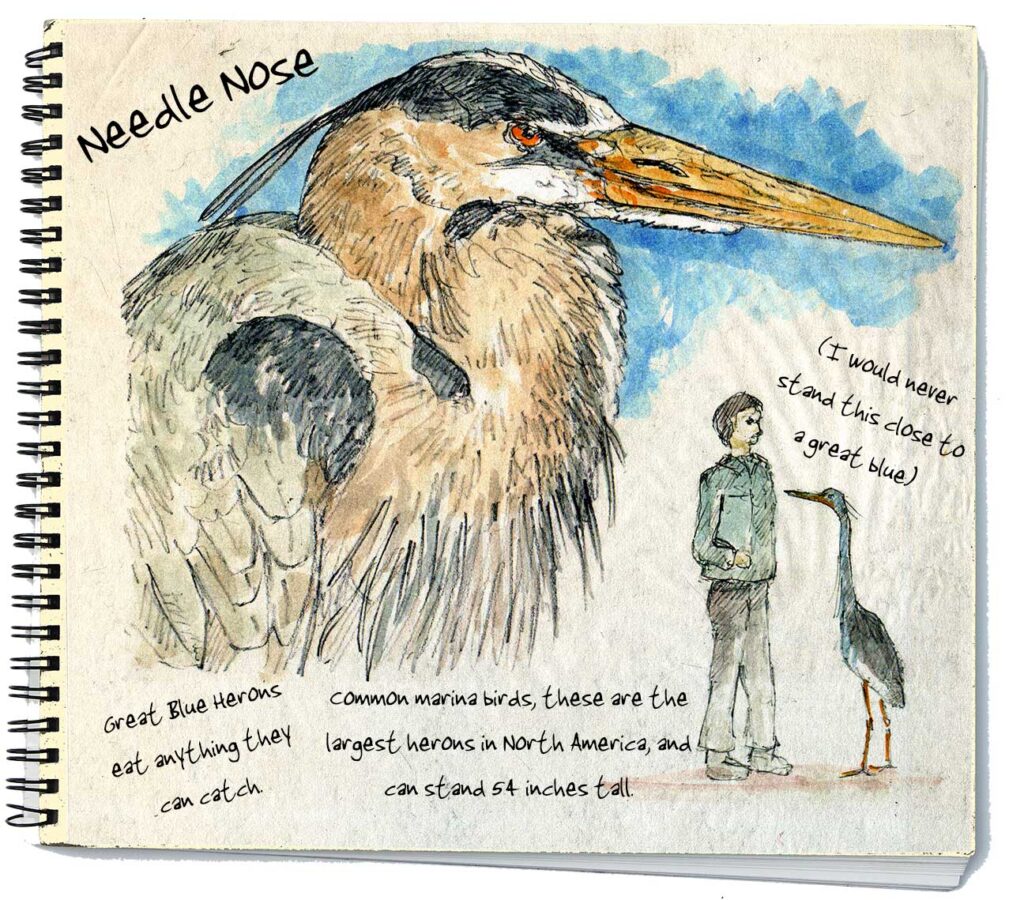A powerful bird! I had a chance to personally experience this when I attempted to rescue a great blue heron that had fallen out of a tree during a storm. It had an injured wing, and I tossed a blanket over its head for the trip to the wild animal hospital. Not so fast. In a snap, the thing was out of that blanket and a massive bill went straight for my eyes. With both hands around its neck, I still had difficulty stopping it. Somehow, we got it into a box, but not without several holes punched in arms, chest and the box. A memorable experience for both of us! The bird survived and I came away with a wildlife encounter I’ve not forgotten.
This familiar marina bird is North America’s largest heron, standing 4 ½ feet tall with a 6 ½ foot wingspan. They’ll eat anything they can get that big bill into, fish, frogs, insects and small mammals, and so these herons don’t need to migrate to find food as long as there is open water. Winter is a good time to see them here, standing frozen in place, staring down into the water and waiting for dinner to swim by. Then, in an instant, they stab, flip whatever it is into position and quickly swallow. If the fish is large, they’ll sometimes slam it a couple of times on a rock to get the spiny fins to relax – and that makes for easier swallowing. These birds have long skinny feathers that hang down around their necks that specifically aid water runoff. The water flows down these feathers and drains without creating drops and splashes. This aids their stealthy hunting.
Larry Eifert paints and boats in Port Townsend, and his large-scale nature murals can be seen in many national parks.

